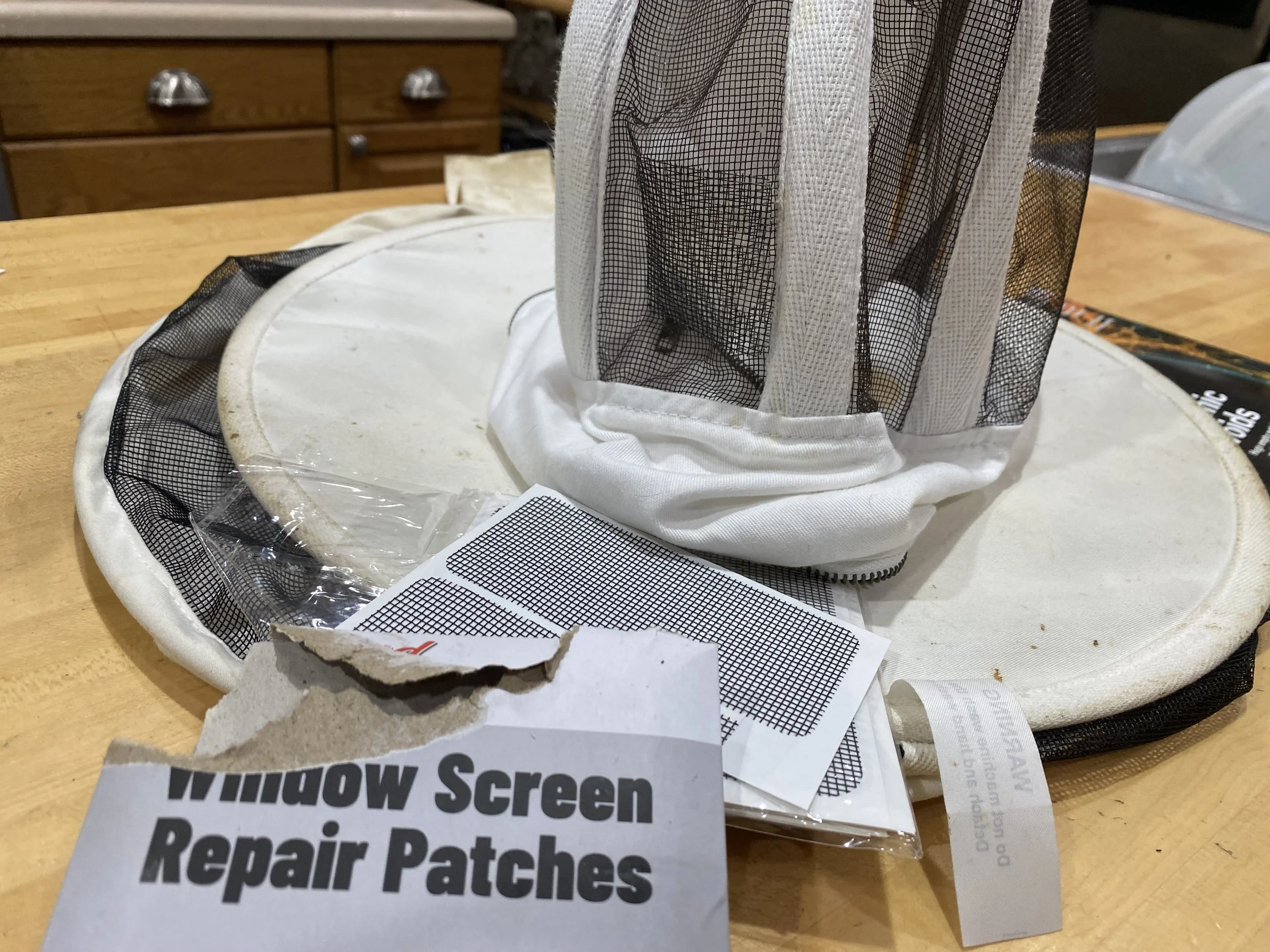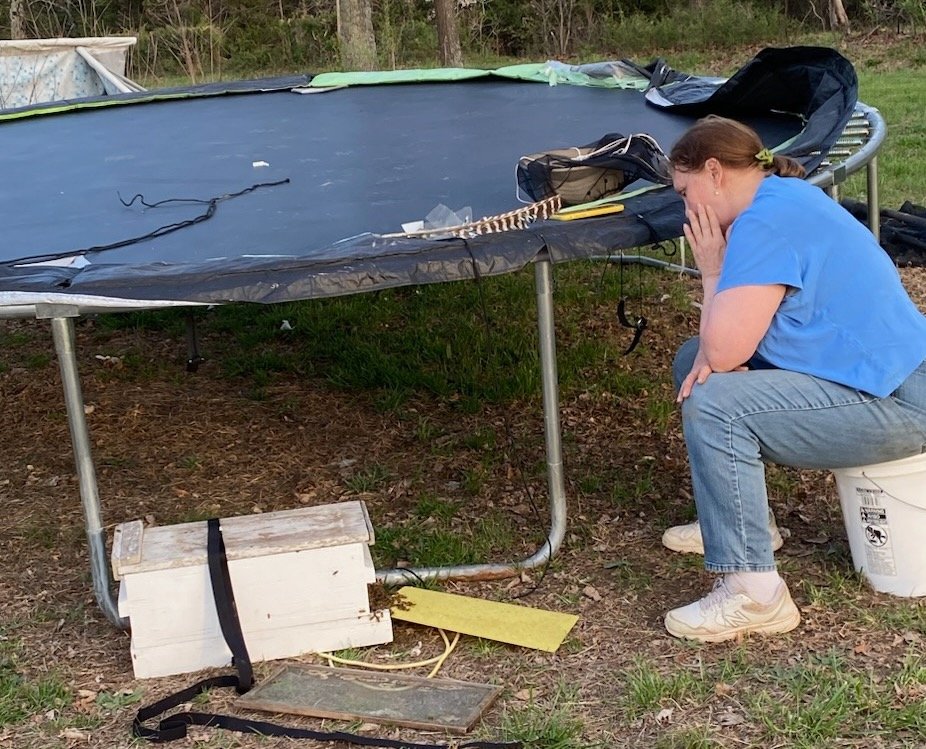Getting a Drink
/Some of the honey bees in my garden getting a drink out of a bird bath. (Photo by Charlotte Ekker Wiggins)
Getting a Drink
We had a couple of days early February 2020 with temperatures in the 70s. Record warm temperatures for mid-Missouri that time of year, and only a couple of days before another winter storm was forecasted.
As I walked through my limestone hillside garden, I enjoyed watching my honey bees doing what they normally do during a warm week, which included taking a drink. All of the bird baths I have scattered close to their hives were busy. Most still had water, and the ones that didn’t were quickly refreshed. As I filled up the bird baths, it reminded me of the set of the Days of the Week kitchen towels featuring bees. I couldn’t remember if one of the days featuring water carrying.
Honey bees need water close by. They use water to mix with pollen to make bee bread among other things. Seeing the water carriers lapping up the moisture confirmed that they may be making bee bread for to feed baby bees, or brood.
And yes, the water is not “clean.” Dr. Dale Hill confirmed at a conference a couple of years ago that honey bees prefer aged water. That’s where they pick up minerals that they need to stay healthy.
This particular bird bath has leaves and small sticks for safe landing spots. I also place rocks in the center of the bird bath to give them a safe landing spot.
Bird baths are usually available at most home and garden centers. The concrete ones tend to stay in place on my Missouri hillside a little better than the plastic ones although both can be susceptible to the ground heaving and thawing. One of my early spring jobs is to make sure they are all level and, if not, get them back to that condition.
But I confess, I wait for the bees to get their drinks first.
Charlotte
















